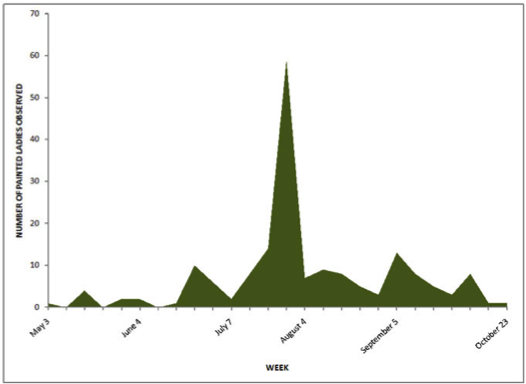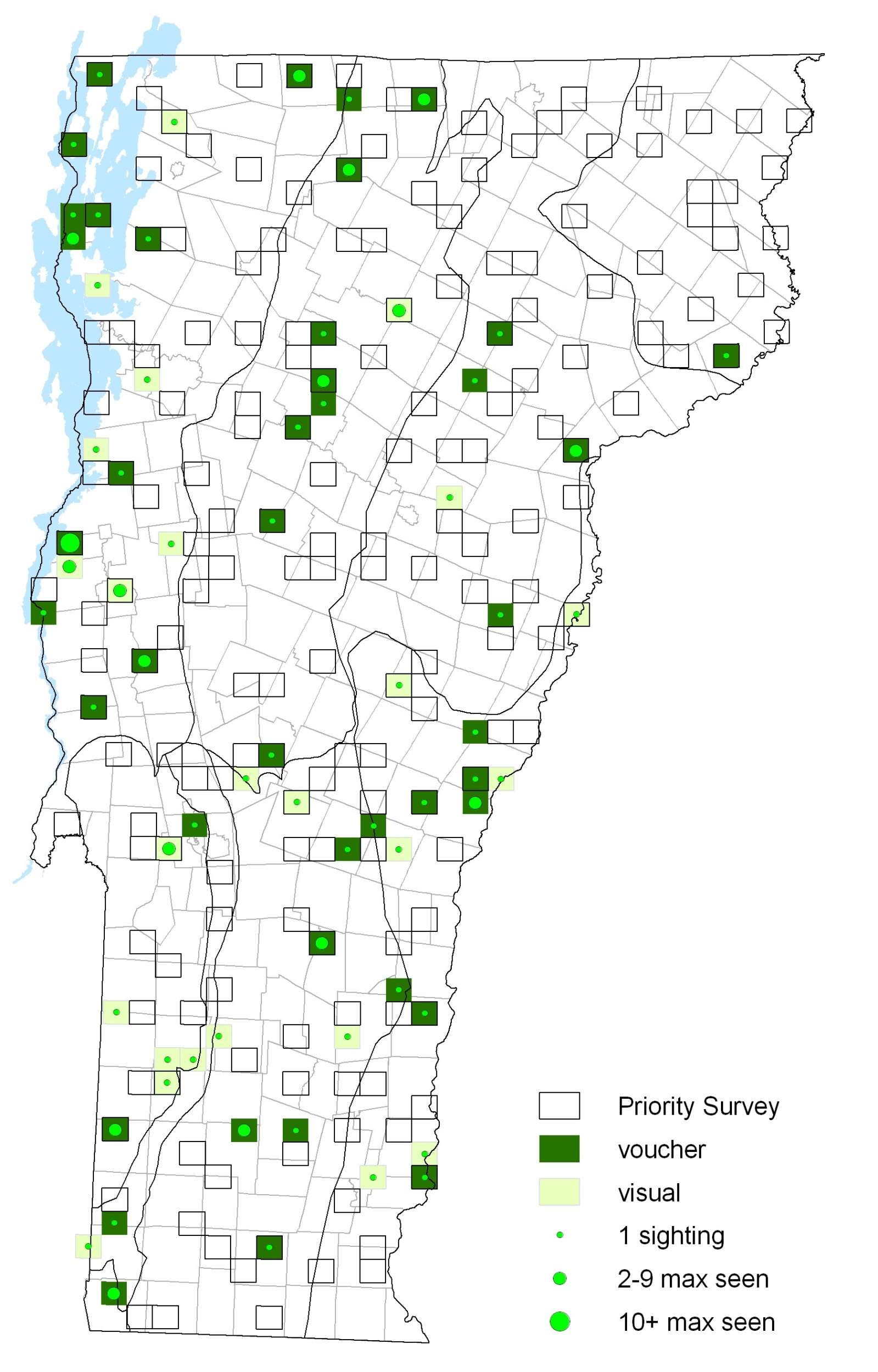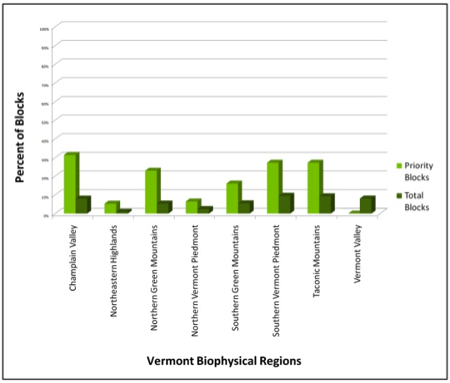|
Resident Conservation Status North American Range |
Also known as the “cosmopolitan”, this species is an incredible disperser and one of the most widespread butterflies in the world. Occasional population explosions in Mexico can cause massive northward migrations in the spring. The Painted Lady is also known as the “Thistle Butterfly” because of the caterpillars’ food preference. The Painted Lady is often associated with the American Lady with whom it shares a number of traits including habitat and a generalist lifestyle. It is unable to survive cold temperatures and must recolonize Vermont each year.
Identification
Upperside is orange-brown with darker wing bases; forewing with black apex patch and white bar on leading edge; hindwing submarginal row of five small black spots sometimes has blue scales. Underside has a black, brown, and gray pattern with four small submarginal eyespots.
Flight
It occurs cyclically throughout New England. Scudder (1889) recorded its irregular appearance in New England from 1878 to 1887: abundant in 1878, 1884, and 1886 and very scarce other years. During VBS larger flights occurred in 2003 (27% of all records) and 2005 (65%) with very few records reported in other years. Because of the irregular nature of this species, the onset of flight dates varies annually, but they fly until frost. Extreme dates: 3 May 2003 in Corinth (J. Eilertsen), 23 October 2006 in Rupert (D. Rolnick), and 27 October 1970 in Burlington (W. Roth).
Distribution and Habitat
During VBS recorded throughout Vermont except for the Northeast Highlands. Habitats are everything from deserts and dry, open prairies to woodlands, costal wetlands, urban areas and gardens. More than 100 hostplants have been noted; favorites include thistles (Cirsium), hollyhock (Alcea) (recorded during VBS in Wilmington by G. Look), and various legumes (Fabaceae). Adults prefer nectar from composites 3-6 feet high, especially thistles; also Aster (Symphyotrichum), Red Clover (Trifolium pratense) and milkweeds (Asclepias).







